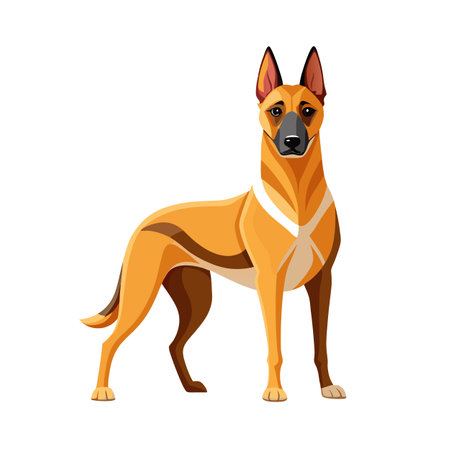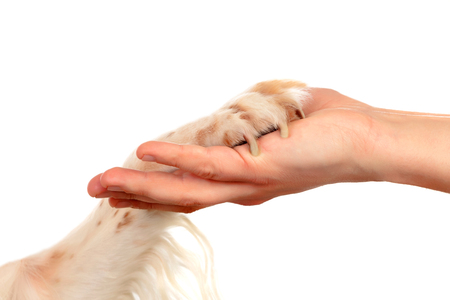Understanding Clicker Training
If you’ve ever watched a well-behaved pup in a park and wondered how their human taught them those impressive tricks, there’s a good chance clicker training played a part. Clicker training is a popular positive reinforcement method among American dog owners, celebrated for its simplicity and effectiveness. At its core, clicker training uses a small handheld device that makes a distinct “click” sound. This click marks the exact moment your dog performs the desired behavior, signaling to your furry friend that they’ve done something right and that a treat or reward is coming their way.
The magic of clicker training lies in its clarity. Dogs don’t always understand what we want from them, but the click provides instant feedback, making communication clear and consistent. This method is rooted in science—using positive reinforcement rather than punishment encourages your dog to repeat good behaviors because they associate them with rewards, not fear. Across America, pet parents from bustling city apartments to sprawling country farms love clicker training because it builds trust, strengthens the human-animal bond, and makes learning fun for both you and your pup. Whether you’re raising a playful puppy or working with an older rescue, clicker training offers a gentle, effective way to guide your canine companion toward becoming their best self.
2. Getting Started: Choosing the Right Tools
Before you jump into clicker training with your pup, it’s important to have the right tools on hand. A successful training session starts with a reliable clicker, delicious treats your dog loves, and a comfortable space that keeps distractions to a minimum. Here’s how to get set up for success:
Finding the Best Clicker for Your Dog
Not all clickers are created equal! Some are louder, while others have a softer sound that might be better for noise-sensitive pups. You’ll also find options with wrist straps, ergonomic designs, or even built-in treat dispensers. The key is to pick one that feels comfortable in your hand and produces a clear, consistent click your dog can hear.
| Clicker Type | Sound Level | Best For |
|---|---|---|
| Standard Box Clicker | Loud & Clear | Most dogs; outdoor use |
| Button Clicker | Softer Click | Noise-sensitive or small dogs |
| Ring or Strap Clicker | Moderate Volume | Multi-tasking or on-the-go training |
| Treat Dispensing Clicker | Varies by model | Puppies or food-motivated pups |
Selecting Tasty Treats That Motivate Your Dog
The right treat can make all the difference! Choose small, soft treats that your dog can gobble up quickly so you can keep the momentum going during training. Popular choices include bits of cooked chicken, cheese, store-bought training treats, or even tiny pieces of hot dog. Remember, every dog has their own preferences—sometimes you have to experiment to find what gets those tails wagging!
Treat Selection Tips:
- Size: Small enough for quick eating (pea-sized is perfect)
- Texture: Soft and easy to chew—avoid crunchy biscuits that take time to eat
- Aroma: Smelly treats often grab your dog’s attention better than bland ones
- Health: Use high-value treats sparingly if your pup is on a special diet or watching their weight
Setting Up a Comfortable Training Space at Home or Outdoors
Your environment plays a big role in your dog’s ability to focus and learn. Start indoors in a familiar room free from loud noises and distractions like other pets or family members walking by. If you prefer the great outdoors—maybe your backyard under the shade of an old oak tree—make sure it’s fenced in and safe from wandering wildlife or neighborhood distractions.
Checklist for the Perfect Training Spot:
- A quiet, distraction-free area (indoors or outdoors)
- A non-slip surface for safety—think rugs inside or grass outside
- Your clicker and treats within easy reach (a treat pouch helps!)
- A comfy spot for you both—a chair or picnic blanket works great in the yard!
- A water bowl nearby if training sessions run long on sunny days
With these essentials gathered and your training space ready, you’re well on your way to building a joyful, rewarding clicker training routine with your furry best friend!

3. Introducing the Clicker to Your Dog
Step 1: Charging the Clicker
Before you start teaching your dog any tricks or commands with a clicker, it’s important to “charge” the clicker. This simply means helping your pup associate the sound of the clicker with something positive—usually a tasty treat. Start by sitting in a calm, familiar space, like your living room or backyard. With your dog nearby, press the clicker once and immediately offer a high-value treat. Repeat this process 10-15 times in short sessions throughout the day. The goal is for your dog to learn that every click means something awesome is coming their way!
Step 2: Building Positive Associations
Consistency is key here. Continue clicking and treating, but avoid adding any commands just yet. If you have other pets in the house—say, a curious cat or an energetic flock of chickens—make sure they aren’t distracting your dog during these early lessons. Keep sessions short and sweet to maintain excitement and focus. Watch your pup closely; signs like perked ears, tail wagging, or even an eager sit can show that they’re starting to “get it.”
Step 3: Observing Your Dog’s Response
Once your dog starts looking at you expectantly when they hear the click, you know you’re on the right track! Try moving to different pet-friendly areas around your home or yard to practice in new environments—a cozy porch, sunny garden patch, or even while lounging on a picnic blanket. This helps reinforce the association no matter where you are. Remember, every dog learns at their own pace, so be patient and celebrate small victories along the way.
Country Living Tip:
If you live in a rural area with lots of distractions (like squirrels or noisy neighbors), keep initial sessions indoors or in a fenced space. As your pup becomes more confident with the clicker, gradually introduce them to busier spots so they can focus even when life gets a little wild!
4. Teaching Basic Commands
When it comes to clicker training, teaching your pup the classic commands like “sit,” “stay,” and “come” is a breeze—with plenty of tail wags and positive energy along the way! These basic cues are not only foundational for good manners, but they also strengthen your bond, making every day on the porch or in the backyard more harmonious. Here’s how you can use your clicker to guide your furry friend through these essential skills:
How to Teach “Sit” with Clicker Training
Start by holding a treat above your dog’s nose, then slowly move it back over their head. As their bottom naturally lowers to the ground, immediately click and give a treat. Consistency is key—repeat this process several times, always clicking the moment their bottom hits the floor. Soon, you’ll have a pooch who sits on cue faster than you can say “good dog!”
How to Teach “Stay” with Clicker Training
Once your dog masters “sit,” it’s time for “stay.” Ask them to sit, then hold your hand out like a stop sign and say “stay.” Wait just a second or two at first—if they remain in place, click and reward. Gradually increase the duration and distance before clicking, but always keep it fun and rewarding. If your dog breaks position, simply reset and try again without scolding. Remember, patience (and plenty of treats) make perfect!
How to Teach “Come” with Clicker Training
This command is all about enthusiasm! With your dog a short distance away, crouch down, open your arms, and call them excitedly: “Come!” The moment they head your way—even if it’s just a step—click and treat. Celebrate each success with lots of praise so coming when called feels like hitting the jackpot every time.
Quick Reference Table: Classic Command Training Steps
| Command | Action | Click Timing | Pro Tips |
|---|---|---|---|
| Sit | Lure with treat above nose; wait for bottom to touch ground | The instant their bottom touches down | Keep sessions short and upbeat |
| Stay | Signal with hand; ask for stillness after sit | After a brief pause of staying put | Gradually add time/distance; reward often at first |
| Come | Crouch and call enthusiastically from a short distance | As soon as they move towards you | Always reward generously; never call for punishment |
A Few Extra Tips for Success:
- Keep sessions fun—end before your pup gets bored or frustrated.
- If training outdoors (maybe near the veggie patch!), start with minimal distractions.
- Praise lavishly; in American households, we love cheering on our pets!
- If mistakes happen, stay calm—clicker training is all about positive vibes!
With consistency, patience, and lots of encouragement (plus maybe a few treats from your farmhouse kitchen jar), you’ll be amazed how quickly your dog picks up these classic commands using clicker training!
5. Troubleshooting Common Challenges
Tips for Overcoming Distractions
One of the most common hurdles in clicker training is dealing with distractions—whether it’s a squirrel outside the window or the sound of kids playing in the backyard. Start training your dog in a quiet, familiar environment like your living room or kitchen. Gradually introduce more distractions as your pup gets the hang of it. If your dog loses focus, calmly bring their attention back to you using a favorite treat or toy. Remember, patience is key! Many American dog parents recommend keeping sessions short and ending on a positive note so your dog stays motivated.
Managing Short Attention Spans
Puppies and even some adult dogs can have notoriously short attention spans. Don’t expect marathon training sessions—instead, aim for multiple 5-minute sessions throughout the day. Use high-value treats that your dog doesn’t get at any other time (think small pieces of cheese or cooked chicken). If your dog seems bored or distracted, switch up the reward or add in a quick play break. Consistency over time will help build longer focus, and soon you’ll notice your dog getting excited every time they see the clicker!
Dealing with Stubbornness and Frustration
Every dog is different, and some may seem stubborn or uninterested in training at first. Don’t get discouraged! Take a step back and analyze what might not be working. Are the rewards enticing enough? Is the training too advanced? Sometimes, American trainers suggest going back to basics—make sure your cues are clear and always reward immediately after clicking. If you’re feeling frustrated, end the session with something your dog knows well so you both finish on a high note.
Advice from Experienced Dog Parents
American dog parents often share that building trust through positive reinforcement makes all the difference. “Celebrate every small win,” says Lisa from Texas, who trains her three rescue pups with clickers on her farm. “Even if it’s just eye contact or sitting quietly, those moments add up.” Another tip: keep your clicker handy during everyday activities—like feeding time or walks—so you can capture good behavior as it happens naturally.
When to Ask for Help
If you’re consistently struggling despite trying these strategies, don’t hesitate to reach out to a professional trainer in your area. Many local trainers offer group classes or one-on-one sessions tailored to beginners. Remember, clicker training should be fun and rewarding for both you and your furry friend!
6. Making Training a Daily Adventure
Clicker training isn’t just for scheduled “training time”—it can become a natural part of your everyday country or suburban life with your dog. The key is to keep sessions short, fun, and rewarding, so both you and your furry friend look forward to them. Here are some creative ways to weave clicker training into your daily routines, turning ordinary moments into exciting learning opportunities.
Morning Routines on the Porch or in the Yard
Start your day by grabbing your coffee and a pocketful of treats. While your dog stretches their legs in the morning dew, use the clicker to reinforce calm behavior at the door, polite waiting before heading outside, or responding to their name amid birdsong. These quick moments set a positive tone for the whole day.
Walks Through Fields or Suburban Streets
Every stroll is a classroom! Practice loose-leash walking by clicking and treating when your dog walks beside you instead of pulling. Reward them for ignoring distractions like passing cars, squirrels, or neighborhood chickens. If you pass by mailboxes, gates, or garden gnomes, ask for a simple sit or touch—and celebrate with a click and treat.
Farm Chores & Garden Time
If you live in the country, invite your pup to join as you feed chickens or tend vegetables. Use the clicker to mark good choices—like staying out of flower beds or calmly watching livestock. In suburban yards, reward them for settling on their mat while you garden or for bringing you toys instead of digging up plants.
Rainy Day Creativity Indoors
When the weather keeps you inside, turn household routines into mini training sessions. Click and treat for polite waiting at the door before heading out in boots, or practice “place” on their bed while you tidy up. Even asking for a few tricks during TV commercials keeps minds sharp and tails wagging.
Keep Sessions Short and Sweet
Remember: dogs learn best when training feels like play. Aim for 1–5 minute bursts throughout the day—just enough to keep things fresh and fun. End each session on a high note so your dog always wants more.
The Joy of Everyday Progress
By making clicker training part of your daily adventures—whether under big country skies or along leafy suburban sidewalks—you’ll deepen your bond and see real progress without ever feeling like it’s a chore. Every moment together becomes another chance to connect, communicate, and celebrate success.


